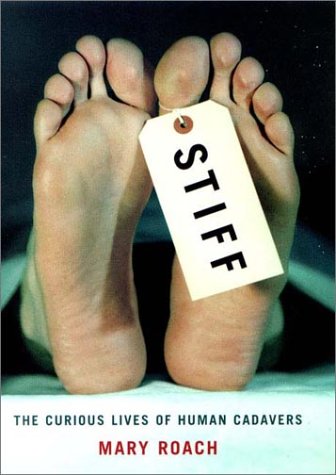In short, donating one's body to science generally doesn't result in a fairy tale ending. As Roach relates in impeccably researched detail, human cadavers are dissected, left to rot, shot in the face, dropped from buildings, crucified, burned, pummeled, hit by speeding motorized vehicles, poked, prodded, exploded or any combination thereof. But while her subject matter is admittedly morbid, Roach goes about the business of recording the various fates of her characters with a sense of dignity that's far from the disrespectful jokishness one might expect from a book that's essentially about the mutilation of dead bodies.
Of course, there's also a certain reverent sense of humor employed by Roach in her writing that serves to prevent Stiff from becoming a written installment of the moronic Faces of Death video series. Death, after all, is arguably the most absurd state of being anyone can find himself in. And, as Roach points out, even if a particular human being contributed relatively little to his fellow man whilst drawing air into his lungs and going about the business of living for 60- or 70-odd years, there's still a chance for him to contribute to society posthumously.
Over the course of 2,000 years, cadavers have been responsible for the advent of seat belts, helmets, body armor, airbags, collapsing automobile hoods, organ transplants, cures for scores of diseases, methods of treatment of and rehabilitation from countless injury classes and subclasses, and other medical, technological and safety inventions and advances too numerous to mention. Dead humans still prove indispensable in many areas of science, including a whole host of them you've never heard of but that Roach has gone out of her way to thoroughly explore.
Stiff is an intensely absorbing read that has little to do with shock value and everything to do with unraveling one of life's most compelling mysteries: What happens to me when I'm dead? Not everyone, of course, eventually leads the exciting and completely pain-free existence of a cadaver donated to science, but Roach includes an entire chapter dedicated to natural decomposition for those inclined to feel left out—a chapter that, if anything, is likely to send every reader of her book scrambling to their nearest teaching hospital to fill out the necessary donor paperwork.









